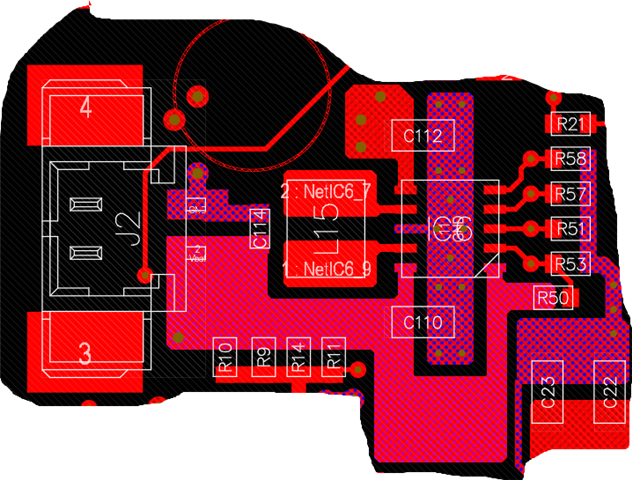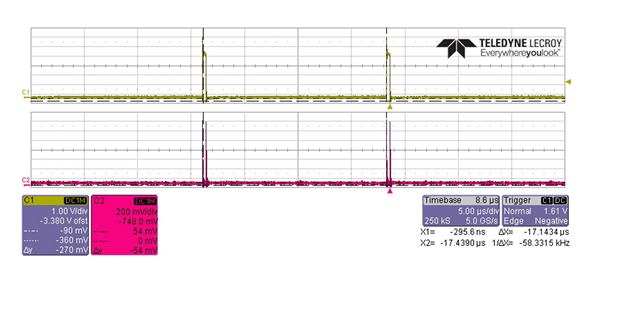Hi to everyone we are testing the TPS63900DSKR in the following conditions and with the following part failures. Any advice on why this could happen?
Failure type 1 (2 devices broken in this condition):
- Device input voltage 4.5V
- Output V2 set to 3.3V with no current limitation
- Output V1 set to 3.3V
- Total Capacity on Vout about 850uF (ceramic capacitors)
- 2.2uH coil
- SEL INPUT connected to Vin
- EN PIN set to VIN
- CFG1 with 36.5 KOhm 1% resistor to GND
- CFG2 with 0 Ohm to GND
- CFG3 with 16.2 KOhm 1% to GND
- Output current load about 4mA (before failure)
- Input power supply: Laboratory DC power supply max 3.5A output
In this condition the part fails after few minutes of operation with no action. Output is shorted to GND. >2A absorbed from input power supply
Failure type 2 (2 devices broken in this condition):
- Device Vin input voltage 3.8V
- Output V2 set to 3.3V with no current limitation
- Output V1 set to 3.3V
- Total Capacity on Vout about 850uF (ceramic capacitors)
- 2.2uH coil
- SEL INPUT connected to Vin
- EN PIN set to VIN
- CFG1 with 36.5 KOhm 1% resistor to GND
- CFG2 with 0 Ohm to GND
- CFG3 with 16.2 KOhm 1% to GND
- Output current load about 4mA (before failure)
- Input power supply: Laboratory DC power supply max 3.5A output
In this condition the part fails after few minutes of operation with no action. Output goes to 0.5V. about 50mA absorbed from input power supply.
Thanks Jan




